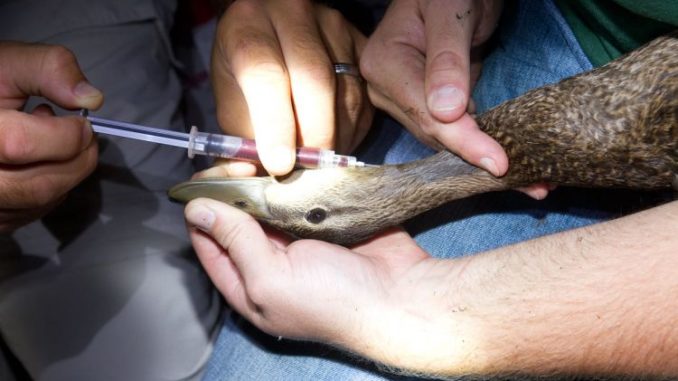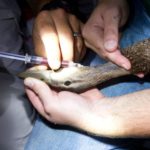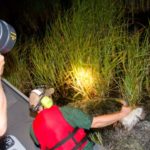
For years now, it’s been widely documented that mottled duck populations have been declining on the Texas Gulf coast, while they have remained somewhat stable in Louisiana.
According to a Texas study, the primary cause for the downturn is human activity where the landscape has been altered and developed. Other causes may include drought, saltwater intrusion, increased predator populations, exotic invasive plants and lead.
Joe Marty, a biologist with the Louisiana Department of Wildlife and Fisheries, wanted to mirror a Texas study where blood samples were taken from mottled ducks looking to determine lead concentration — this time on Rockefeller Wildlife Refuge in Cameron Parish.
Prior studies by Texas researchers indicate mottled ducks continue to display increased lead concentrations in wing-bone samples, though non-toxic shot regulations have been in place for decades.
The report states before the non-toxic shot rules, gizzard samples revealed 33 percent of mottled ducks had eaten lead shot.
When non-toxic shot was phased in from 1980-1983, the report says the ingestion rate fell to 17 percent and eventually to 9 percent by 2002.
Since 2012, estimates for the upper Texas coast still range from 5 to 8 percent.
“I really wanted to do a comparison to see if birds using Rockefeller had lower lead levels than birds off the refuge. But also, because mottled ducks aren’t doing that well right now. Their populations are declining,” Marty said. “We have a number of theories and hypotheses, but it may have something to do with their breeding and nesting success. So, this study might just be another piece to the puzzle.”
In July and August, typically when there is no moon or heavy cloud cover, mottled ducks on Rockefeller were caught by using a night-light and airboat.
LDWF biologist James Whitaker, who also is working on the project, said the goal is to band 3,000 mottled ducks on both public and private land to monitor survivorship and population densities. Since they’re being captured anyway, he said it only makes sense to test for lead levels, too.
“This is information that hasn’t been collected in Southwest Louisiana before. It’s inexpensive and taking blood samples is something we can do in house. The plus side is, we already have the birds in hand,” Whitaker said. “I’m hoping optimistically that lead concentration levels are going to be extremely low on Rockefeller. But, it will be interesting to see what the study comes back with.”
Since mottled ducks are non-migratory in the transcontinental sense, it can be theorized that somewhere during their life cycle along the Gulf Coast they are ingesting lead. It could be bio-accumulated through vegetation or other organic sources termed environmental lead. But, Texas studies of mottled duck gizzards where lead shot has been found indicate otherwise.
Besides taking blood samples to test for lead concentration levels, biologists will also be testing for stibium, or what’s known as antimony — the hardening agent in lead shot.
For the past five years, Whitaker said overall mottled duck numbers have been in decline on Rockefeller. Over that time, the refuge has received excessive amounts of rainfall — and this summer Tropical Storm Cindy impacted the area. By graphing survey numbers with annual precipitation amounts, researchers concluded there could be an inversely proportional correlation.
High water levels could redistribute mottled ducks off of Rockefeller and other marsh habitats and relocate them to agricultural areas, where lead shot is still widely used to hunt dove and snipe throughout the Gulf south.
LDWF biologists will continue the study and take it a step further later this year by obtaining gizzard samples from private duck clubs in the area.

